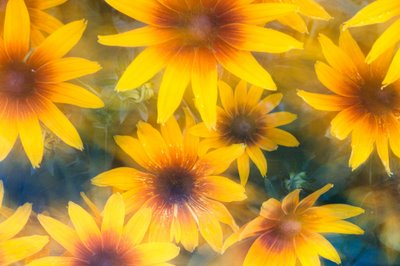
OK, so you have gone out photographing and you have found something worth photographing - now what?
Some questions to ask yourself before shooting:
1) what is it about this subject that appeals to me and is there a way to emphasize that characteristic - different time of day, different lighting, change in camera position, ultimately how I print the picture (previously on the cheap)?
2) Are there parts of the subject that don't in fact work, that add nothing or heaven forbid actually distract from the thing that makes it great? This could mean a filtering or planning black and white or cropping or a different position.
3) From what angle does the subject photograph best - this means walking around the subject if that's possible.
4) From what height should I photograph it - even portraits can change dramatically with a simple change in camera position. Many people found that the medium format waist level cameras made better portraits than pictures taken at eye level - which seems to defy common sense, but hey, it worked?
5) Is there a position which takes best advantage of the background or eliminated distracting elements (landscapes have the equivalent of the tree growing out of the head problems)?
6) Assuming you have a choice of lenses or zoom lenses, how close should you be to best photograph the subject? Try walking to and away from the subject and see at what point the subject is best. This is independent of figuring out how much of the subject to include.
7) You have found the ideal position to record the image - it has interesting shapes and lines, shadows, and forms. Now you have to figure out how much of the subject to include. It's been my experience that attempts to include as much as possible of an interesting subject often ends up with a muddled concept - the left part might be great, the right also but if they don't relate to each other, perhaps you should be photographing them separately. Unfortunately I sometimes find a subject that is full of wonderful things but they don't quite work all together and when you isolate the parts, they are not strong enough to stand on their own. Unfortunately, all you can do is smile and move on.
8) in framing your subject think of creating a painting - you need each part of the canvas to work, none along for the ride. It might mean bringing a diagonal line to the corner, or perhaps two diagonal lines to near the corner but on adjacent sides. Do you want to include all of the rock on the left, or is it stronger if you crop out part? How much foreground adds to the image before it starts to overwhelm the rest of the image?
9) A zoom is a good way to play with cropping but a simple piece of cardboard with a cut out the shape of your film or sensor works faster, lighter and cheaper. Try different framings so you can see which was strongest when you are home (there's nothing worse than wishing after the fact that you'd moved a little to the left).
10) if you have found the very best position to photograph the thing that interests you, if the lighting is appropriate and if you frame the subject the strongest way you can - well the rest is out of your hands - all you have to do is do a decent job of recording the image.
It's very tempting when something really excites you to start firing away immediately without going through these steps. Sometimes this is justified - if lighting isn't going to last, you grab the shot the best you can. But then, with your safety shot in the bag, then you go through the steps above and see if you can top the first image.
The image above was shot in 1977 or thereabouts. I was on a rare afternoon off from my residency in family practice and went for a picnic with my wife, exploring the country south west of Edmonton and west of Pigeon Lake. We found a dirt track down to the N. Saskatchewan river and there enjoyed ourselves sitting on logs having lunch and wandering around the rock flats by the edge of the river. The image illustrates several of the points described above. I found a position which showed the cloud reflecting in the pool, and with the glittering river in the background and interesting bending curves. I anchored the image with the boulders in the foreground but not with so much of them that it distracted from the reflection. I chose a height which showed the boulders to advantage and kept the reflection in position.
The image was taken with a Zeiss Ikonta 6X6 cm. camera, FP3 film.
































